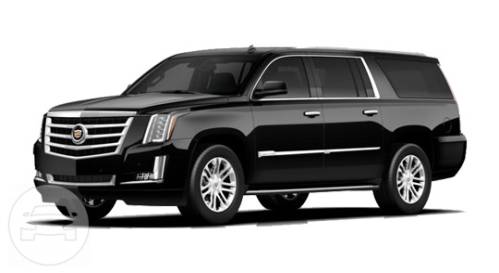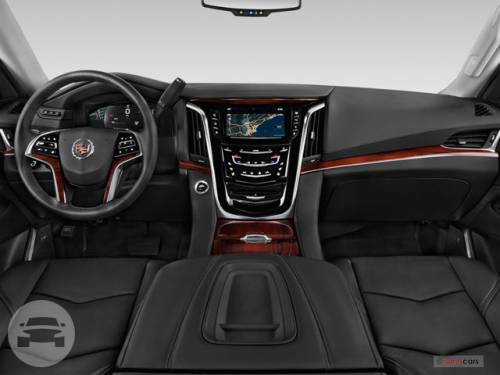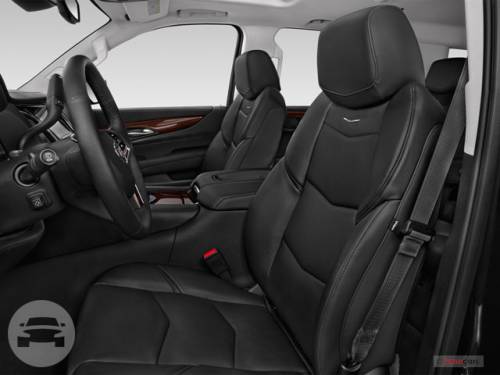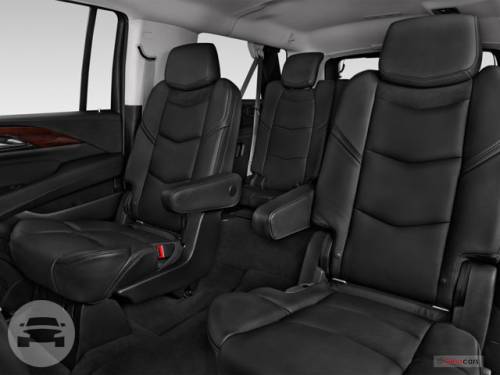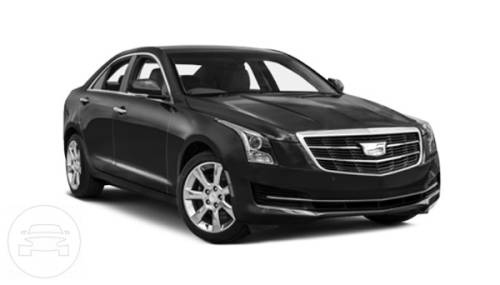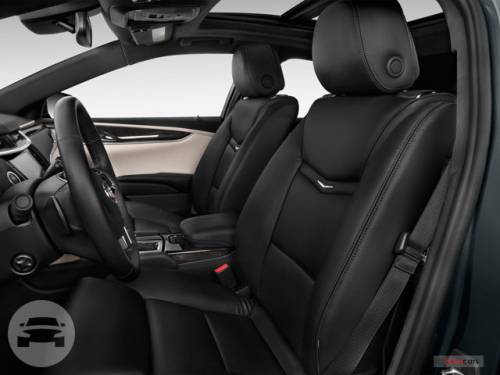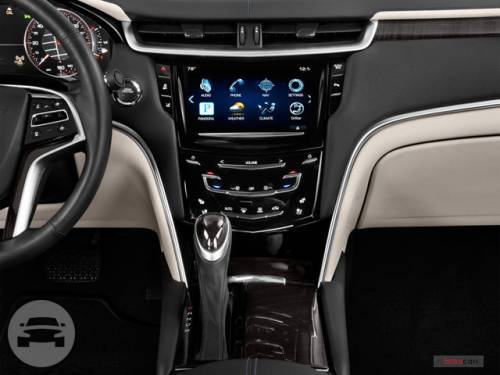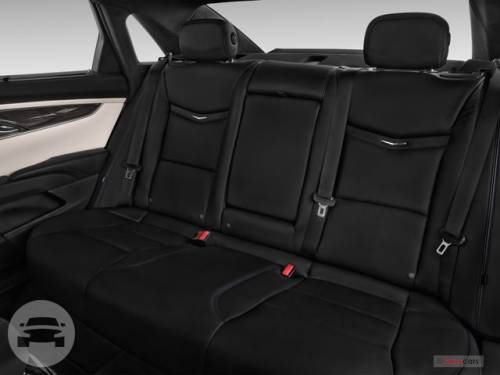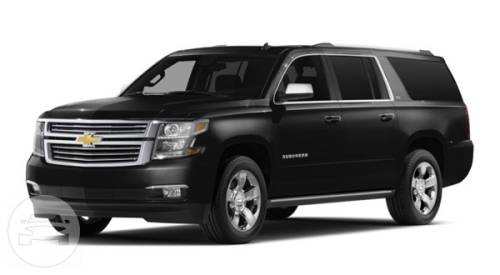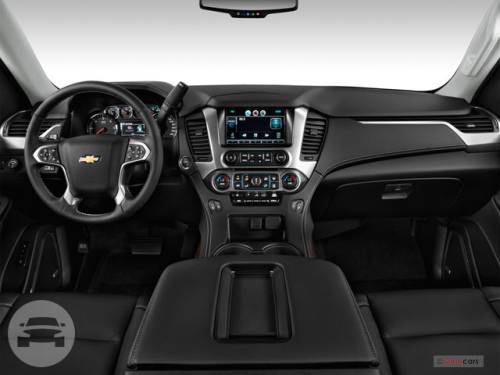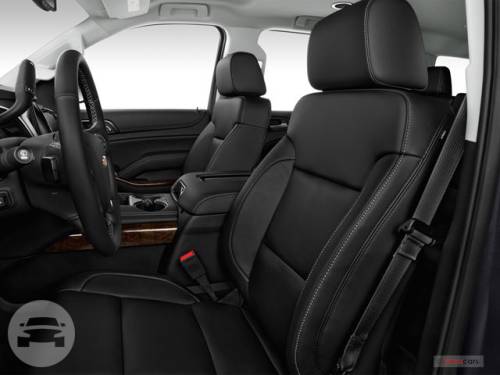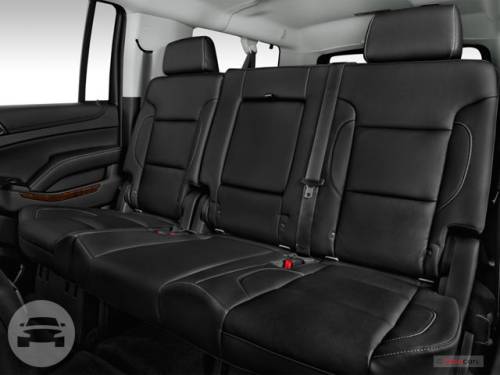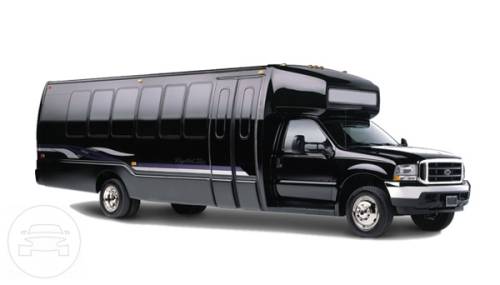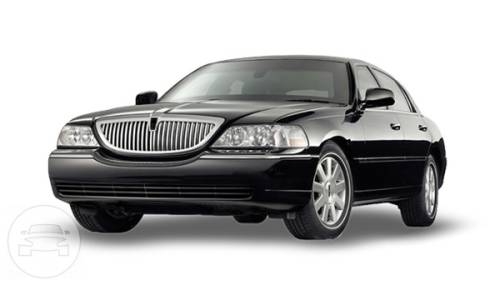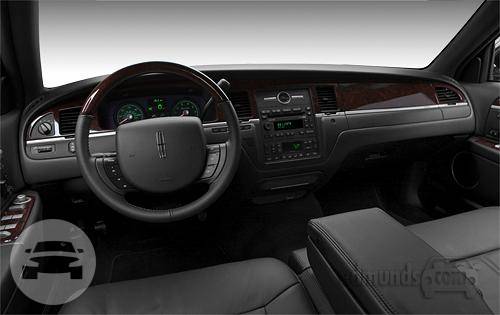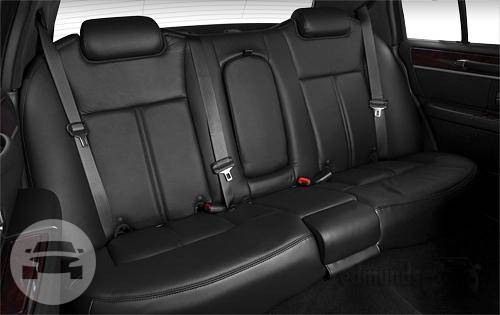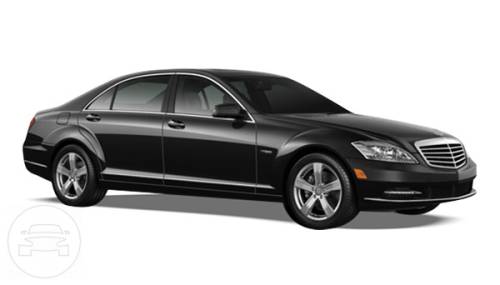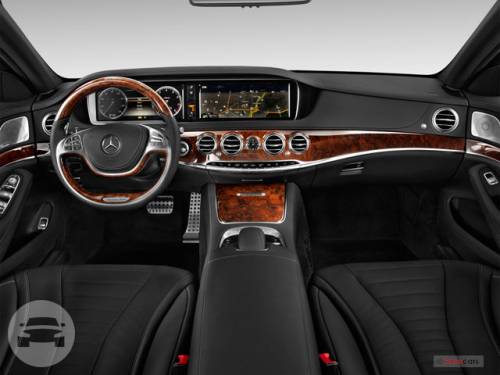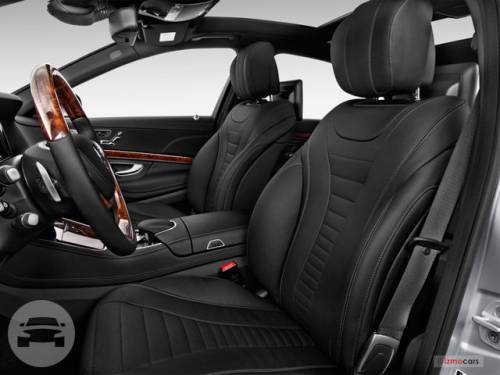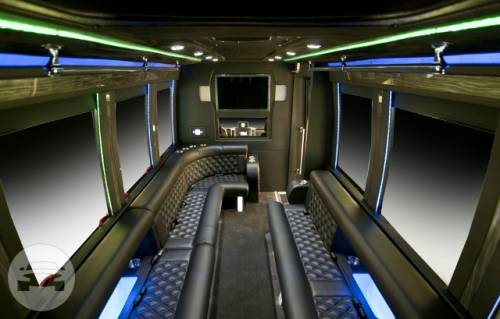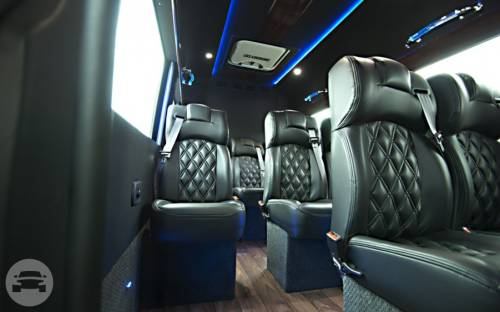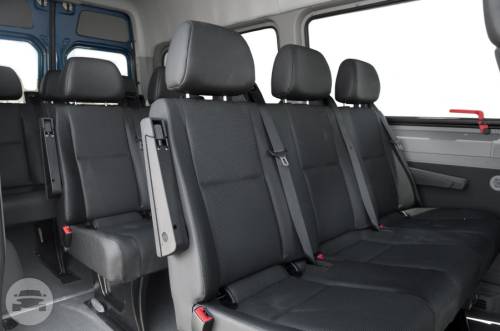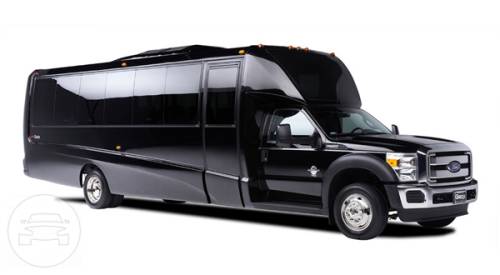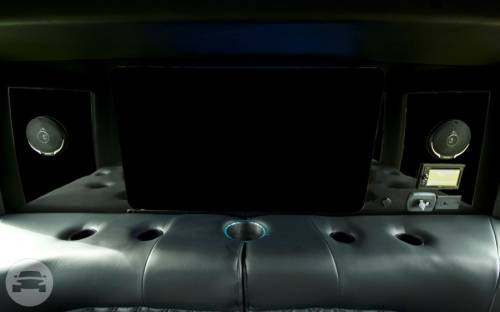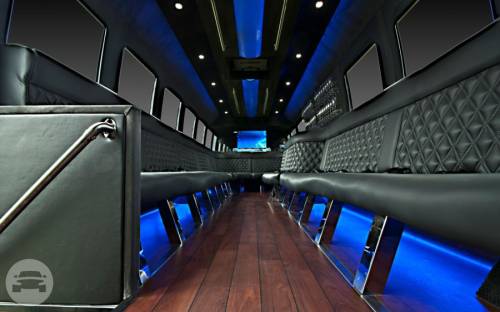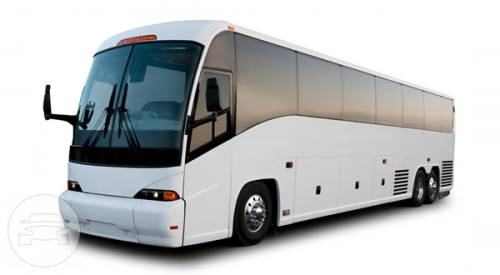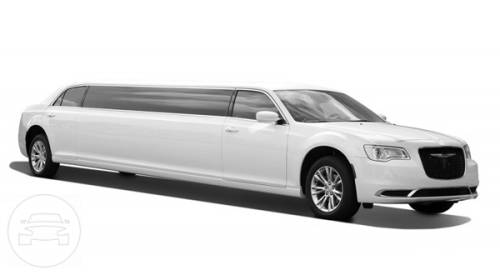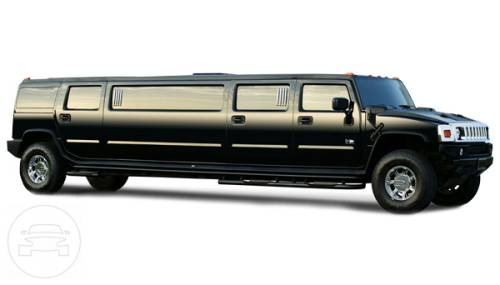31 Airport Blvd, South San Francisco, CA 94080, USA
+1 (415) 494-8122
Booked them for a trip to Napa for my birthday. Edwin was my driver and he was amazing. Great price and great service!
Great company to work with. It was very easy to book the party bus with Dave. Straight forward, very clear communication. The driver came on time, spotless clean bus, very well maintained, comfortable and good looking interior with great sound system. Professional driver, smooth driving all around San Francisco which is not easy to do.
I will definitely come back and would recommend Urban Limos to all my friends.
Thank you!
I am a senior corporate travel consultant for a large travel agency that has just started working with UrbanBCN Worldwide this year. We are always extremely leery of trying different car service companies, but I am so glad that we tried Urban this year, as they have exceeded my expectations. The service that has been provided is far superior to our previous car service provider at all of our local and international destinations. I can't recommend them enough. Thank you Dave for making my job easier!
The story begins in the late ’70’s, when our father, Eli Uziel decided to move his family from Israel to San Francisco with hopes of obtaining the “American Dream.” When he arrived, his brother, Abe offered him an opportunity in building a transportation company from the ground up. Eli didn’t hesitate to get involved and after 35 years in the business, he had the opportunity to meet a lot of great people that he called clients but also his extended family.
In 2009, after 30 years of service, Eli retired with the support of his family. His son, David, decided to take over the day-to-day operations of the business with hopes of growing the family business. After 7 years of hard work and dedication, Urban Limos has become one of the premier black car services in San Francisco and world wide.
As a family owned company, we understand and value personal relationships. Each team member at UrbanXec will constantly try to exceed customer happiness and satisfaction, while still maintaining the resourcefulness of a large organization. Backed by a highly experienced, round-the-clock control team with the very latest technology at their disposal, we guarantee to get you to your destination with the most appropriate route in the safest and fastest possible way.
We strive to assure punctual and stress-free transportation to the destination of your choice. In addition,UrbanXec will always prioritize safety measures, professionalism, and excellence in service throughout your requested trip.
A LITTLE HISTORY The Cadillac Escalade is a full-size luxury SUV engineered and manufactured by Cadillac. It was Cadillac’s first major entry into the popular SUV market. The Escalade was introduced for the 1999 model year in response to German and Japanesecompetitors and to Ford’s 1998 release of the Lincoln Navigator. The Escalade project went into production only ten months after it was approved. The Escalade is built in Arlington, Texas. The name Escalade refers to a siege warfare tactic of scaling defensive walls or ramparts with the aid of ladders or siege towers. The 1999 Escalade was identical to the 1999 GMC Denali, but was redesigned for the 2002 model year to make its appearance fall more in line with Cadillac’s “art and science” design theme. Escalade production went on hiatus for the 2001 model year. The Escalade ESV (based on the Chevrolet Suburban) and its former sibling the Escalade EXT (based on the Avalanche sport utility truck) were made in Silao, Mexico, before the 2007 redesign; the new Escalade ESV is sourced from Arlington, Texas. As of 2015, the Cadillac Escalade is available in every country that Cadillac is available in, except Israel. The Escalade ESV version is available in the United States, Canada, Mexico, and the Middle East. It is Cadillac’s largest luxury oriented, passenger and load carrying vehicle which was previously served by the Cadillac Commercial Chassis. SERVICE OFFERED IN THIS VEHICLE Point to point service Airport transfers Dedicated chauffeur service Nightlife service 6-7 passengers Large Luggage Capacity Heated Seats Black Leather Interior On Board Wi-fi Phone Chargers Complimentary Water & Newspaper
Cities:
San Francisco, CA; Napa, CA; Palo Alto, CA; San Jose, CA; Oakland, CA; Concord, CA
A LITTLE HISTORY The Cadillac XTS is a full-size luxury sedan from Cadillac. It is based on an enlarged version of the Epsilon II platform. The XTS replaces both the Cadillac STS and DTS, and is smaller than the DTS but larger than the STS. It began production in May 2012 at the Oshawa Assembly Plant and launched in June. The XTS is available with both front-wheel drive and all-wheel drive. For the Chinese market, the Cadillac XTS is being assembled by Shanghai GM. Production began in February 2013. In addition to the LFX 3.6 V6, Cadillac XTS also comes with an LTG 2.0 turbo engine in the Chinese market. In the Chinese market, the Cadillac XTS with an LFX 3.6 V6 engine is called XTS 36S, and the version with LTG 2.0 turbo engine is called XTS 2.0T. This vehicle may be partially marketed in Europe, though the only LWB car based on the Epsilon II platform sold in Europe was Saab 9-5 which ceased production in 2012. As of November 2015, the Cadillac XTS Sedan is available in the United States, Canada, Mexico, China, and the Middle East (except Israel) in LHD only. SERVICE OFFERED IN THIS VEHICLE Point to point service Airport transfers Dedicated chauffeur service Nightlife service 2 passengers Luggage Capacity for 2 large & 1 small suitcases Black Leather Interior Heated Seats On Board Wi-fi Phone Chargers Complimentary Water & Newspaper
Cities:
San Francisco, CA; Napa, CA; Palo Alto, CA; San Jose, CA; Oakland, CA; Concord, CA
A LITTLE HISTORY The Chevrolet Suburban is a full-size, extended-length sport utility vehicle from Chevrolet. It is the longest continuous use automobile nameplate in production, starting from 1933 for the 1935 U.S. model year, and has traditionally been one of General Motors’ most profitable vehicles. The Suburban has been produced under the Chevrolet, Holden, and GMC marques until the GMC version was rebranded as the GMC Yukon XL. For most of its recent history, the Suburban has been a station wagon-bodied version of the Chevrolet pickup truck, including the Chevrolet C/K and Silverado series of truck-based vehicles. Cadillac offers a version called the Escalade ESV. The Suburban is sold in the United States (including the insular territories), Canada, Mexico, Chile, and the Middle East (except Israel) as a Left-hand drive vehicle, while the Yukon XL is sold only in North America (United States and Canada) and The Middle East territories (except Israel). SERVICE OFFERED IN THIS VEHICLE Point to point service Airport transfers Dedicated chauffeur service Nightlife service 7 passengers Large Luggage Capacity Black Leather Interior Bench Seating 3rd Row Seating On Board Wi-fi Phone Chargers Complimentary Water & Newspaper
Cities:
San Francisco, CA; Napa, CA; Palo Alto, CA; San Jose, CA; Oakland, CA; Concord, CA
A LITTLE HISTORY A coach (also motor coach, often simply referred to as a bus) is a type of vehicle used for conveying passengers on excursions and on longer-distance intercity bus service between cities—or even between countries. Unlike transit busesdesigned for shorter journeys, coaches often have a luggage hold that is separate from the passenger cabin and are normally equipped with facilities required for longer trips, including comfortable seats and sometimes a toilet. The term “coach” was previously used for a horse-drawn carriage designed for the conveyance of more than one passenger, the passengers’ luggage, and mail, that is covered for protection from the elements. The term was applied to railway carriagesin the 19th century, and later to motor coaches. Horse-drawn chariots and carriages (“coaches”) were used by the wealthy and powerful where the roads were of a high enough standard from possibly 3000 BC. In Hungary, during the reign of King Matthias Corvinus in the 15th century, the wheelwrights of Kocs began to build a horse-drawn vehicle with steel-spring suspension. This “cart of Kocs” as the Hungarians called it (Hungarian: kocsi szekér) soon became popular all over Europe. The imperial post service employed the first horse-drawn mail coaches in Europe since Roman times in 1650, and as they started in the town of Kocs, the use of these mail coaches gave rise to the term “coach”. Stagecoaches (drawn by horses) were used for transport between cities from about 1500 in Great Britain until displaced by the arrival of the railways. One of the earliest motorised vehicles was the charabanc, which was used for short journeys and excursions until the early years of the 20th century. The first “motor coaches” were purchased by operators of those horse-drawn vehicles in the early 20th century by operators such as Royal Blue Coach Services, who purchased their first charabanc in 1913 and were running 72 coaches by 1926. SERVICE OFFERED IN THIS VEHICLE Point to point service Airport transfers Dedicated chauffeur service Shuttle service Nightlife service 28, 38 & 40 passengers Large Luggage Capacity Black Leather Interior Executive Style Seating On Board Wi-fi P.A. System Large LCD Screen
Cities:
San Francisco, CA; Napa, CA; Palo Alto, CA; San Jose, CA; Oakland, CA; Concord, CA
A LITTLE HISTORY The Lincoln Town Car is a full-size luxury sedan that was sold by Lincoln from the 1981 to the 2011 model years. Some units have been converted into a stretch limousine; it was the most commonly used limousine and chauffeured car in the United States and Canada. The Town Car nameplate for the 4-door sedan was first introduced in 1959 to the Lincoln Continental Mark IV, and then to Mark V lineup, each as a top-of-the-line luxury 4-door sedan. The nameplate became a permanent part of the Continental lineup again in 1969, and beyond that year with special editions of the brand denoting its highest-trim interior package. In 1981, the Town Car became a stand-alone model in the Lincoln product line, superseding the Continental as the flagship for the Lincoln brand as well as for Ford Motor Company. Its large dimensions made it the largest car in production in North America. From 1997 to 2003, the Town Car was the longest car (but not the heaviest) built in the Western Hemisphere, measuring nearly 18 feet (5.49 m) in length for a standard Town Car and 18.5 feet (5.64 m) for an L Edition. SERVICE OFFERED IN THIS VEHICLE Point to point service Airport transfers Dedicated chauffeur service Nightlife service 3 passengers Luggage Capacity - 3 large & 2 small suitcases Black Leather Interior Heated Seats On Board Wi-fi Phone Chargers Complimentary Water & Newspaper
Cities:
San Francisco, CA; Napa, CA; Palo Alto, CA; San Jose, CA; Oakland, CA; Concord, CA
A LITTLE HISTORY The Mercedes-Benz S-Class, formerly known as Sonderklasse (German for “special class”), is a series of flagship vehicles produced by the German automaker Mercedes-Benz, a division of German company Daimler AG. The classification was officially introduced in 1972 with the W116 S-Class, which succeeded previous Mercedes-Benz models dating to the mid-1950s. The S-Class has served as the top model for Mercedes for over fifty years in its various incarnations. The S-Class has debuted many of the company’s latest innovations, including drivetrain technologies, interior features, and safety systems (such as the first seatbelt pretensioners).[2] The S-Class has ranked as the world’s best-selling luxury sedan,[3] and its latest generation, the W222 S-Class, premiered in 2013. As in previous iterations, the W221 S-Class is sold in standard- and long-wheelbase versions; I4, V6, V8, V12,diesel and hybrid powertrains are offered. All models built in Mexico or sold in the United States are only available in long wheelbase. “S-Class” is the anglicized version of “S-Klasse,” an abbreviation of the previously mentioned Sonderklasse. In automotive terms it refers to “a specially outfitted car.” Although used colloquially for decades, following its official application in 1972, six generations of officially named S-Klasse sedans have been produced. Previous two-door coupe models of the S-Class were known as SEC and later S-Coupe. In 1998 the S-Class coupe was spun off in a separate line as the CL-Class, however as of June 2014, it has been re-designated as the S-Class Coupé for the 2015 model year, doing away with the CL-Class SERVICE OFFERED IN THIS VEHICLE Point to point service Airport transfers Dedicated chauffeur service Nightlife service 2 passengers Luggage Capacity for 2 large & 1 small suitcases Black Leather Interior Heated Seats On Board Wi-fi Phone Chargers Complimentary Water & Newspaper
Cities:
San Francisco, CA; Napa, CA; Palo Alto, CA; San Jose, CA; Oakland, CA; Concord, CA
A LITTLE HISTORY The Sprinter is a vehicle built by Daimler AG of Stuttgart, Germany as a van, chassis cab, minibus, and pickup truck. In the past the Sprinter has been sold under the Mercedes-Benz, Dodge, Freightliner, and Volkswagen nameplates. In the United States it is built from complete knock down (CKD) kits by Freightliner. They are now primarily marketed by Mercedes-Benz. Rebadged and re-engined Sprinters are also sold by Volkswagen Commercial Vehicles as the Volkswagen LT and the Volkswagen Crafter. SERVICE OFFERED IN THIS VEHICLE Point to point service Airport transfers Dedicated chauffeur service Shuttle service Nightlife service 11, 14 & 17 passengers Various Luggage Capacity Black Cloth & Leather Interior Shuttle, Executive & Limo Style Seating On Board Wi-fi Large LCD Screen
Cities:
San Francisco, CA; Napa, CA; Palo Alto, CA; San Jose, CA; Oakland, CA; Concord, CA
A LITTLE HISTORY The Ford Super Duty is a line of trucks (over 8,500 lb (3,900 kg) GVWR) that were launched by Ford in early 1998 for the 1999 model year. The F-250 to F-550 Super Duties are assembled at the Kentucky Truck Plant in Louisville, Kentucky. The F-650 and F-750 Super Duties were assembled at the Blue Diamond Truck plant in Mexico prior to 2014, when production was shifted to Avon Lake, Ohio. The Super Duty trucks are larger, heavier built series pickup trucks with heavier-duty body-on-frame steel ladder frames, axles, springs, brakes, transmissions, more powerful engines, and all other heavier/bigger components (with much higher payload and towing capacities) than the older traditional equivalent F-250, F-250HD (Heavy Duty), and F-350 Ford truck lines (where from 1987 to 1997 the F-250, F250HD, F-350, and F-Super Duty were all chassis cab models only). The two-wheel-drive and four-wheel-drive model frames are the same in the F-250 and F-350 series, making conversion from a two-wheel-drive model to a four-wheel-drive model less difficult than in other truck models. F-350 chassis cab, F-450 and F-550 frames and suspension are the same between the two-wheel-drive and four-wheel-drive models. SERVICE OFFERED IN THIS VEHICLE Dedicated chauffeur service Winery & City Tours Nightlife service 14, 20, 30 & 40 passengers Black Leather Interior Limo Style Seating (J-seating) Faux Hardwood Style Floors On Board Wi-fi Amazing Sound System Large LCD Screen Optional Dancing Pole
Cities:
San Francisco, CA; Napa, CA; Palo Alto, CA; San Jose, CA; Oakland, CA; Concord, CA
A LITTLE HISTORY A coach (also motor coach, often simply referred to as a bus) is a type of vehicle used for conveying passengers on excursions and on longer-distance intercity bus service between cities—or even between countries. Unlike transit busesdesigned for shorter journeys, coaches often have a luggage hold that is separate from the passenger cabin and are normally equipped with facilities required for longer trips, including comfortable seats and sometimes a toilet. The term “coach” was previously used for a horse-drawn carriage designed for the conveyance of more than one passenger, the passengers’ luggage, and mail, that is covered for protection from the elements. The term was applied to railway carriagesin the 19th century, and later to motor coaches. Horse-drawn chariots and carriages (“coaches”) were used by the wealthy and powerful where the roads were of a high enough standard from possibly 3000 BC. In Hungary, during the reign of King Matthias Corvinus in the 15th century, the wheelwrights of Kocs began to build a horse-drawn vehicle with steel-spring suspension. This “cart of Kocs” as the Hungarians called it (Hungarian: kocsi szekér) soon became popular all over Europe. The imperial post service employed the first horse-drawn mail coaches in Europe since Roman times in 1650, and as they started in the town of Kocs, the use of these mail coaches gave rise to the term “coach”. Stagecoaches (drawn by horses) were used for transport between cities from about 1500 in Great Britain until displaced by the arrival of the railways. One of the earliest motorised vehicles was the charabanc, which was used for short journeys and excursions until the early years of the 20th century. The first “motor coaches” were purchased by operators of those horse-drawn vehicles in the early 20th century by operators such as Royal Blue Coach Services, who purchased their first charabanc in 1913 and were running 72 coaches by 1926. SERVICE OFFERED IN THIS VEHICLE Point to point service Airport transfers Dedicated chauffeur service Shuttle service Nightlife service 56 & 81 passengers Large Luggage Capacity Black Leather & Clothe Interior Executive & Shuttle Style Seating On Board Wi-fi P.A. System 6 Digital Monitors Restrooms
Cities:
San Francisco, CA; Napa, CA; Palo Alto, CA; San Jose, CA; Oakland, CA; Concord, CA
A LITTLE HISTORY The first automobile limousine, built in 1902, was designed so the driver sat outside under a covered compartment. The word limousineis derived from the name of the French region Limousin, because this covered compartment physically resembled the raised hood of the cloak worn by the shepherds there. An alternate etymology has the chauffeur wearing a Limousin-style cloak in the open driver’s compartment, for protection from the weather. The first “stretch limousine” was created in Fort Smith, Arkansas, around 1928 by a coach company named Armbruster. These cars were primarily used to transport famous “big band” leaders, such as Glenn Miller and Benny Goodman, and their bands and equipment. These early stretch limousines were often called “big band buses”. In 1916, the Society of Automobile Engineers defined a limousine as: “a closed car seating three to five inside, with driver’s seat outside.” A berline was defined as “a limousine having the driver’s seat entirely inclosed”, while a brougham was defined as “a limousine with no roof over the driver’s seat.” In German-speaking countries, a Limousine is simply a sedan, while a lengthened-wheelbase car is called Stretch-Limousine. SERVICE OFFERED IN THIS VEHICLE Dedicated chauffeur service Winery & City Tours Nightlife service 8 & 10 passengers Black & White Exterior Black Leather Interior Limo Style Seating (J-seating) Amazing Sound System Large LCD Screen Emergency Exit Windows
Cities:
San Francisco, CA; Napa, CA; Palo Alto, CA; San Jose, CA; Oakland, CA; Concord, CA
A LITTLE HISTORY The first automobile limousine, built in 1902, was designed so the driver sat outside under a covered compartment. The word limousineis derived from the name of the French region Limousin, because this covered compartment physically resembled the raised hood of the cloak worn by the shepherds there. An alternate etymology has the chauffeur wearing a Limousin-style cloak in the open driver’s compartment, for protection from the weather. The first “stretch limousine” was created in Fort Smith, Arkansas, around 1928 by a coach company named Armbruster. These cars were primarily used to transport famous “big band” leaders, such as Glenn Miller and Benny Goodman, and their bands and equipment. These early stretch limousines were often called “big band buses”. In 1916, the Society of Automobile Engineers defined a limousine as: “a closed car seating three to five inside, with driver’s seat outside.” A berline was defined as “a limousine having the driver’s seat entirely inclosed”, while a brougham was defined as “a limousine with no roof over the driver’s seat.” In German-speaking countries, a Limousine is simply a sedan, while a lengthened-wheelbase car is called Stretch-Limousine. SERVICE OFFERED IN THIS VEHICLE Dedicated chauffeur service Winery & City Tours Nightlife service 13 & 20 passengers Black & White Exterior Black Leather Interior Limo Style Seating (J-seating) Amazing Sound System Large LCD Screen Emergency Exit Windows
Cities:
San Francisco, CA; Napa, CA; Palo Alto, CA; San Jose, CA; Oakland, CA; Concord, CA
Getting the limousine package is usually a better way to go. Most deals include gratuity (tips), bottle of champagne, water and sign. Also, meet-and-greet for transfers, parking fees and tolls, if any. You can choose a limousine package from the following categories: Concert, Graduation, Wedding and so on..
UrbanBCN Worldwide offers pick-up and drop-off services in the following airports in San Francisco, CA:
2569 Greendale Dr, South San Francisco, CA 94080
+1 (650) 588-4556
1310 Turk St, San Francisco, CA 94115, USA
+1 (415) 812-1757
3260 Maguire Way, Dublin, CA 94568
+1 (925) 200-2824
1 Mission St, San Francisco, CA 94105, USA
+1 (800) 823-7249
881 Lucerne St, Livermore, CA 94551, USA
+1 (844) 546-6757
1039 Sinclair Frontage Rd, Milpitas, CA 95035, USA
+1 (408) 999-0999
